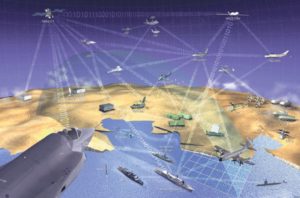Excerpted from full article on Project Red Hand | Original Article
…. No one person in the Nazi party claimed responsibility for the millions of people killed in concentration camps. The hierarchical nature of the party allowed minor bureaucrats to say that they were just following orders, and minor supervisors to say that they only issued commands but did not actually commit the deeds. When one pilfers through archives of confessions, this might be the common arguments one would expect to find. Concentration camps and their transportation networks were designed in manner which created separation between the operators and the prisoners themselves. From cultural indoctrination, they were taught to hate the Jews and see them as lesser beings. Linguistically, Nazis developed official words that were used in common language to make genocide more palatable. A concentration camp official might write home bragging about the “units” he processed that day to his wife, while in the same paragraph telling her how proud he is of his daughter’s grades. Language being our principal means for constructing our reality, is, and has always been used to manipulate perceptions. With each label and each choice of verbiage, it will determine whether we view an action as justifiable or unacceptable, authoritative or subversive. In today’s society, politically loaded words are thrown around constantly, and people are often left unaware of their own emotional manipulation. The military institutionalized this into their vocabulary with the use of emotionally neutral words to describe often controversial topics, and acronyms to describe complex interactions in order to speed up communication and obscure information to non- military ears. It also unofficially uses slang to refer to “others” in a derogatory manner. The culture of the military is often seen from the outside and internally as an exclusive group. Below are a list of terms used, that could be said to have a hold on the US military/ public image of military’s mindset:
- Shake and Bake : a combination barrage of White Phosphorus and explosive artillery shells. Also an American side dish of potatoes.
- Haji: used to describe any person with a brownish skin-tone. Often it is use derogatorily. Actual meaning is someone who has made the pilgrimage to Mecca. In practice, it conflates race with the Muslim faith, and is a label used to identify and “other”. It could also conflate religion with belligerent actors.
- Target: used to describe anything of potential military threat.
- Potential Enemy Combatant: used most in reports or official documents to describe people who were killed who they suspect of being a combatant, but lack adequate evidence
- Suspected Insurgent: Man of military age brought in or killed nearby, or suspected to be linked to insurgent activities.
- KIA: Killed in action. Typically used in referring to friendly forces who are killed in combat. Acronym obscures the emotional response one would have to the word “kill”
- Optics: The public eye (opinion)/ the perception of the man in the street. It is used to obscure text which refers to public opinion
- Collateral Damage: Destruction of unintended infrastructure or the killing of non-combatants (ie. women and children)
- Enemy assets: Roads, bridges, weapons, communication networks, guarded information, and soldiers/ suspected insurgents
- Deconflicted/ Attrited/ Degraded: words that are used in place of “killed”, typically for the purpose of awards packages, EPRs, or other official military documents.
- To Attrit: Means to blow into smithereens; sanitization of destruction
- Fog of War: A term used to justify mistakes or atrocities committed during combat
- Embedded Journalists: Journalists who travel with soldiers and report favorably on the US war effort
- PBIED: Person Borne Improvised Explosive Device; meaning suicide bomber; used in order to not provoke offense
- GWOT: Global War on Terror; refers to all operations, including clandestine operations conducted in the effort to stop terrorism
- EIT: Enhanced Interrogation Techniques; this refers to coercive interrogation tactics such as but not limited to waterboarding and sleep deprivation
- Black Site: locations where they are neutral non-signatory to any torture prohibition treaties. Metaphor used to make it sound more acceptable.
- HVT: High valued target; used for people on terrorist watch lists or those who are valued for their information
- EPW: Enemy Prisoner of War
- Illegal Combatants: Term that replaced EPW to avoid conditions protocols in the Geneva Convention
- Renditions: Removal of EPWs to countries where use of torture in interrogation is condoned. Used to make it sound more acceptable
- Surge: Refers to the deployment of troops; originally called an “escalation” then changed to “augmentation”.
- WMD: Weapons of Mass Destruction; reduced to an acronym to demote after claims of Nuclear Weapons
- Friendly Fire: Used to describe shootings of soldiers belonging to the same side; the purpose is to avoid reality and neutralize emotions on killing people
- CW: Chemical Weapons; acronym that sanitizes death
- Smart Bomb: Refers to precision guided munitions (missiles); this is used to connote to the public that they are extremely accurate and are a good military option; sanitizes death
- Cluster Bomb: these are “dumb” bombs which are released indiscriminately over a targeted area, that often don’t explode and litter populated areas; it does not represent reality
- Daisy Cutter: a bomb called a Blu-82 which is used to flatten areas for helicopter landing and as anti-personnel/ intimidation weapon due to its large lethal radius; name used to sanitize death.

